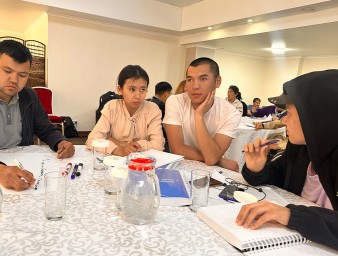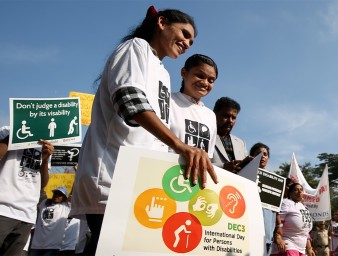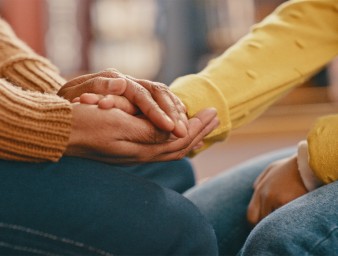Saying no to landmines and promoting the rights of landmines survivors
20 June 2012
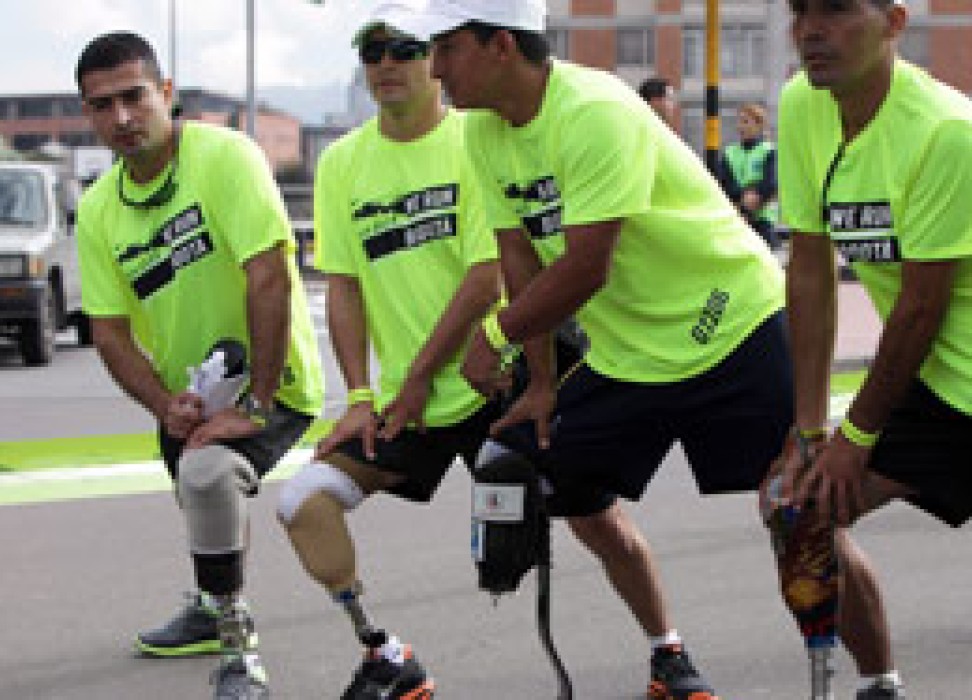
Suk Ratha from Cambodia was 15 years-old when she stepped on a landmine that took off her leg. “My mom asked me to go to the market with my sister to buy medicine for my sick father. So we went along a path I have used many times before,” she said. Then there was a loud explosion and Suk Ratha was flung to the ground. Then she looked down and saw the bloody stump where her leg had been.
More than half a billion persons have a mental, physical or sensory impairment and their lives are often limited by physical or social barriers: this includes the many survivors of landmines accidents.
Approximately 4,200 people were killed in 2010 by landmines and other explosive remnants of war (ERW), according to the 2011 Landmine Monitor Report, which provides civil society monitoring on the humanitarian and developmental consequences of landmines, cluster munitions, and explosive remnants of war.
Although statistics from several countries reflect a noticeable reduction of death and injury, landmines and other explosive remnants of war continue to pose a serious threat to people.
In addition to overcoming physical trauma, mine survivors struggle to achieve social acceptance, gain meaningful employment and ensure that their rights are respected.
Victim assistance is a core component of mine action, consisting of all the activities aiming at the reducing the humanitarian, socio-economic and environmental impact of mines and explosive remnants of war.
Victim assistance obligations by States are included in article 6 of the Antipersonnel Mine Ban Treaty, article 8 of Protocol V to the Convention on Certain Conventional Weapons and more specifically in article 5 of the Convention on Cluster Munitions.
However, it is the UN Convention on the Rights of Persons with Disabilities, which entered into force in 2008, that provides the broadest framework to address the needs of landmine survivors and to ensure the full realization of their human rights and respect for their inherent dignity.
The Convention endorses a paradigm shift in its approach to disability, moving from a model where persons with disabilities are treated as “objects” of medical treatment, charity and social protection to a model where persons with disabilities are recognized as subjects of human rights, active in the decisions that affect their lives and empowered to claim their rights. The Convention also creates national obligations for States vis-a-vis national survivors and other victims.
“The Convention views disability as the result of the failure of societies to be inclusive and to accommodate individual differences,” said UN Human Rights Chief Navi Pillay. “Societies need to change, not the individual, and the Convention provides a road map for such change.”
Victim assistance is a set of concrete actions to meet the immediate and long-term needs of all people with disabilities, including landmine and explosive remnants of war victims and their families. It includes, but is not limited to, information management systems, emergency and continuing medical care, physical rehabilitation, psychosocial support and social inclusion, economic reintegration, and laws and public policies that promote effective treatment, care and protection for all disabled citizens with a human rights perspective.
Landmines and explosive remnants of war survivors face enormous challenges, ranging from the presence of physical barriers in accessing schools and health care services and the lack of rehabilitation services and programmes to stigma.
Mine action activities support the Convention by ensuring that victim assistance policies and programmes supported by mine action centres around the world are in conformity with the provisions of the Convention and by ensuring that the mine action centres are accessible to persons with disabilities. Moreover, mine action centres can engage national authorities and civil society to promote the ratification and implementation of the Convention. To date, 111 countries have ratified the Convention.
To say “No more landmines!” and show solidarity with landmines survivors across the globe, UN Human Rights Chief Navi Pillay joined thousands of people around the world and participated in the “Lend Your Leg” campaign launched by the United Nations system. The campaign encouraged people worldwide by a simple but symbolic gesture of rolling up a pant leg or sleeve to stop the damage landmines cause while showing solidarity with all survivors of landmines and other explosive remnants of war.
20 June 2012
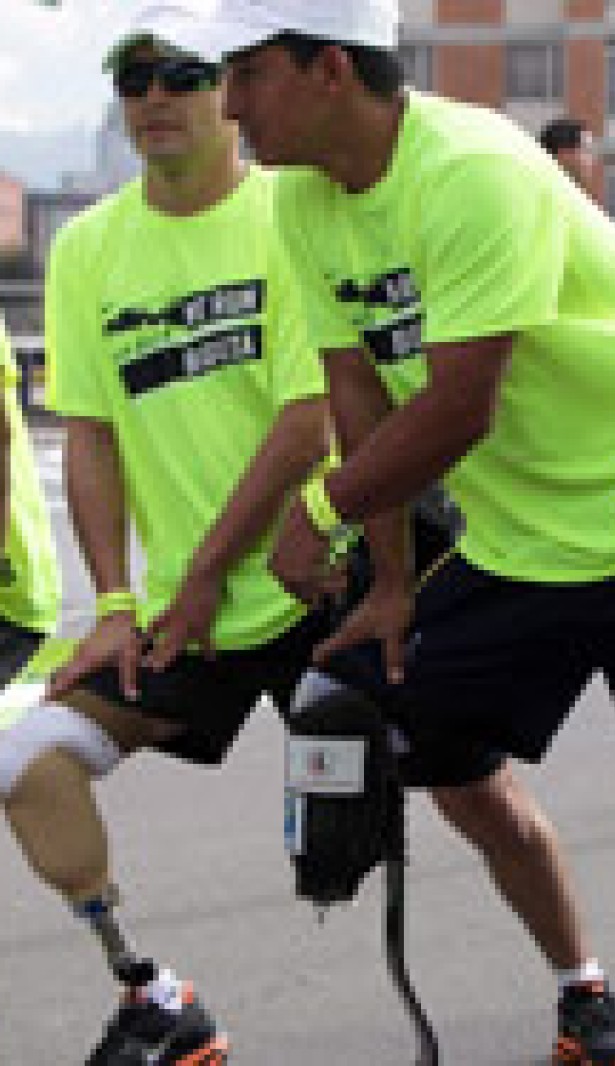
VIEW THIS PAGE IN:

